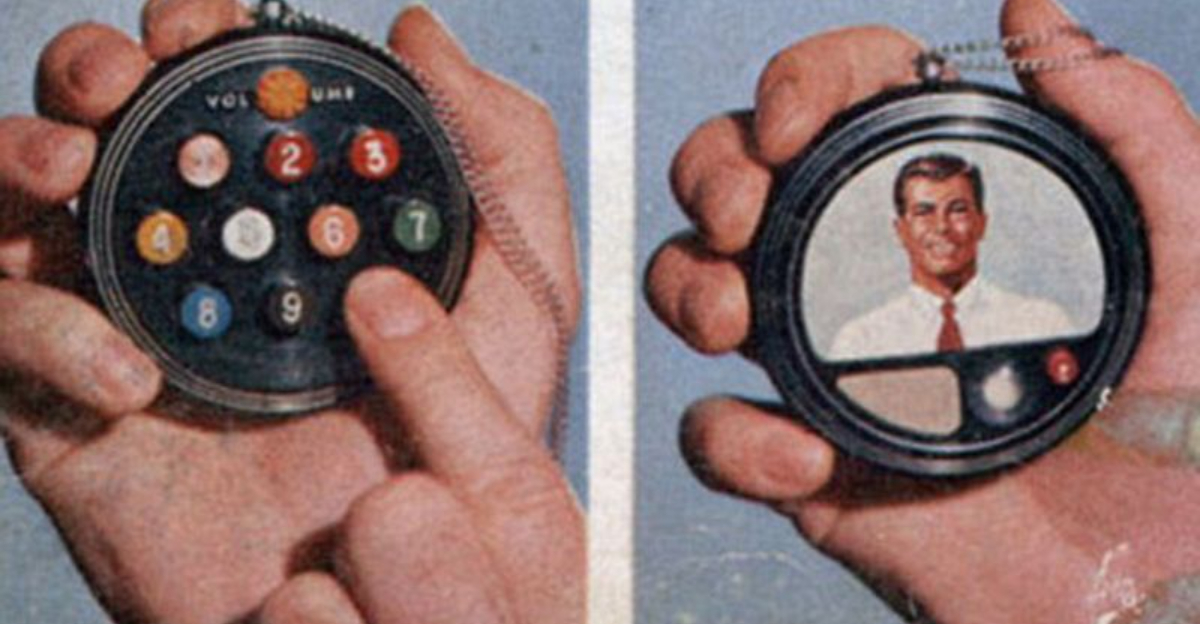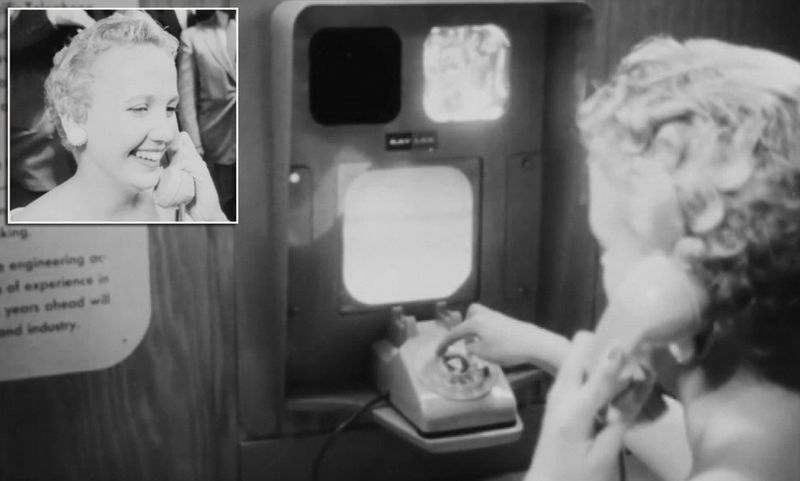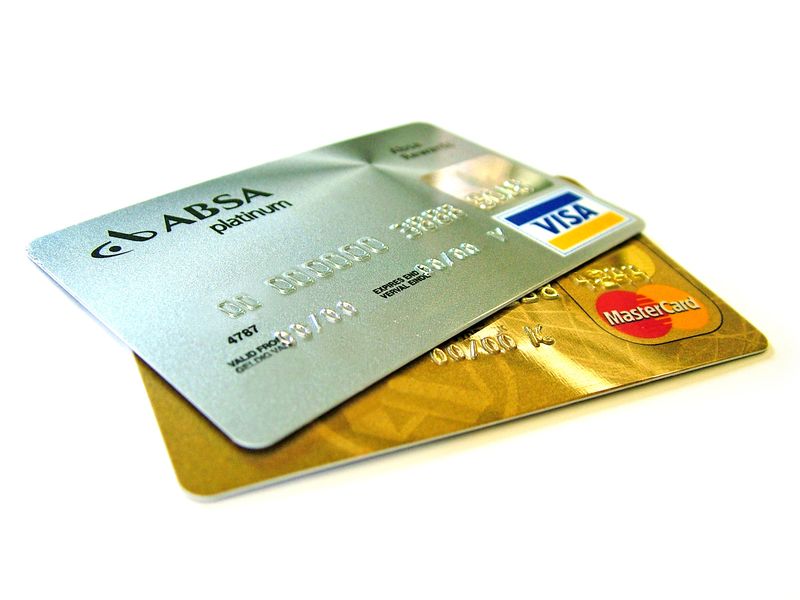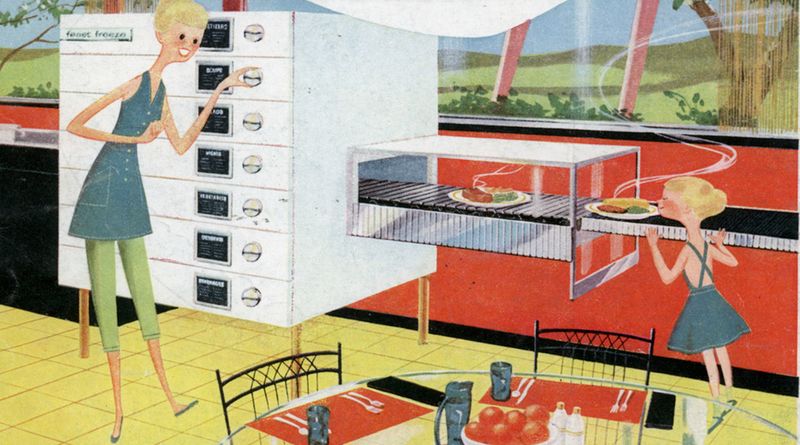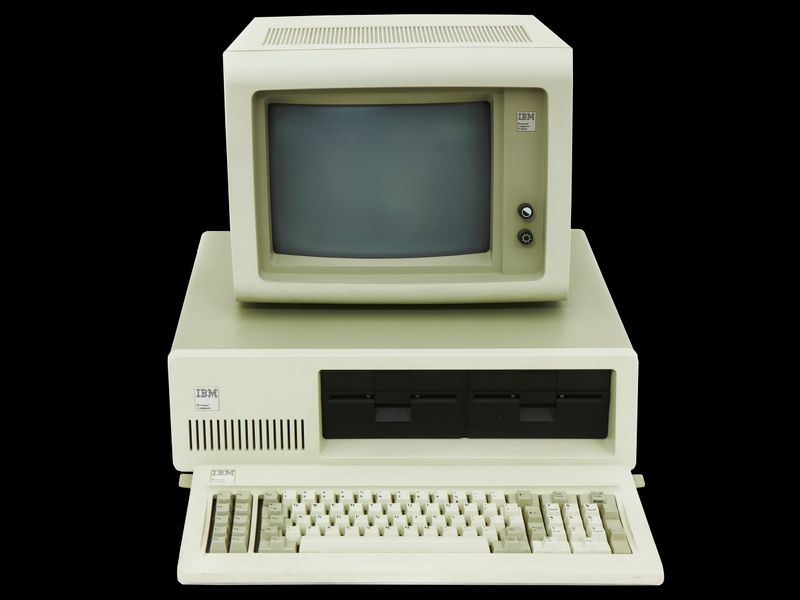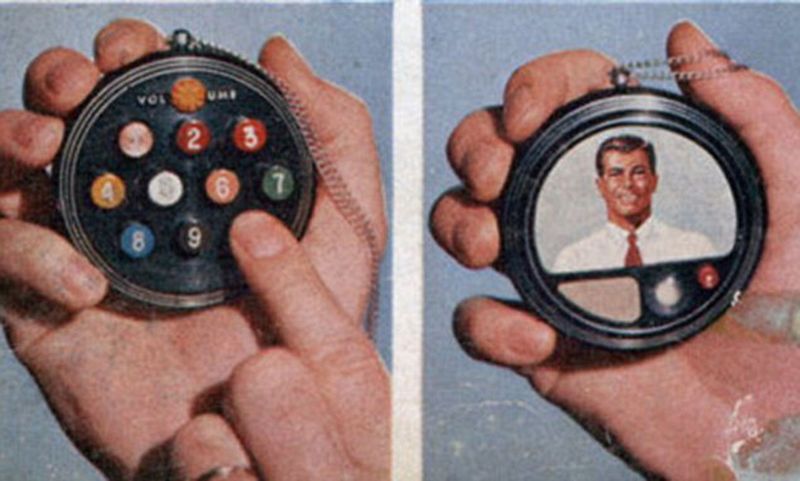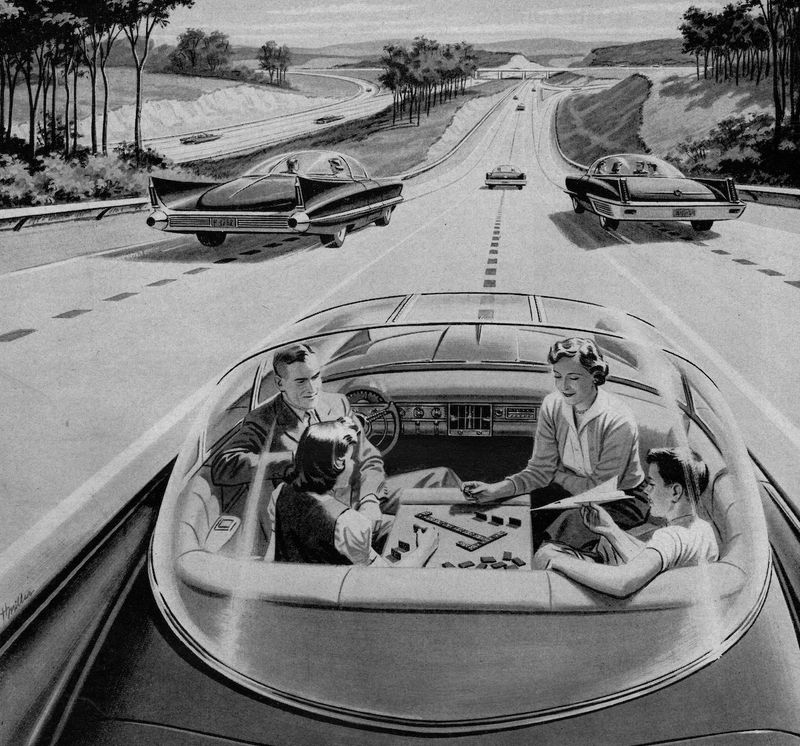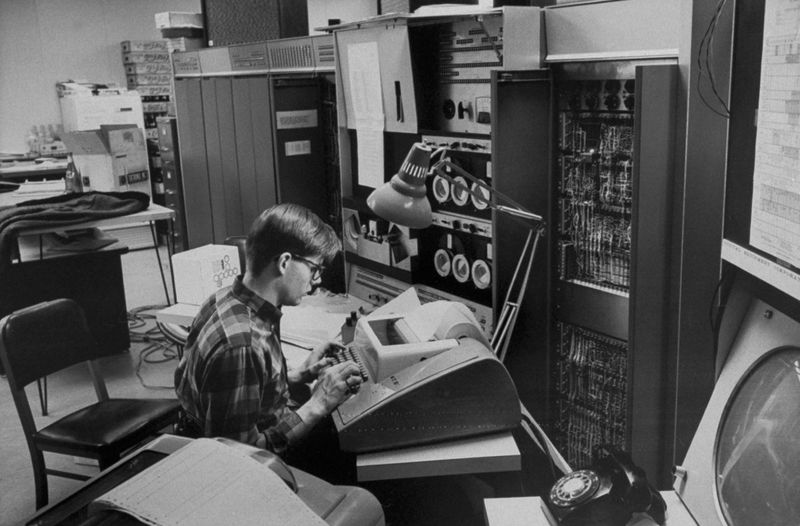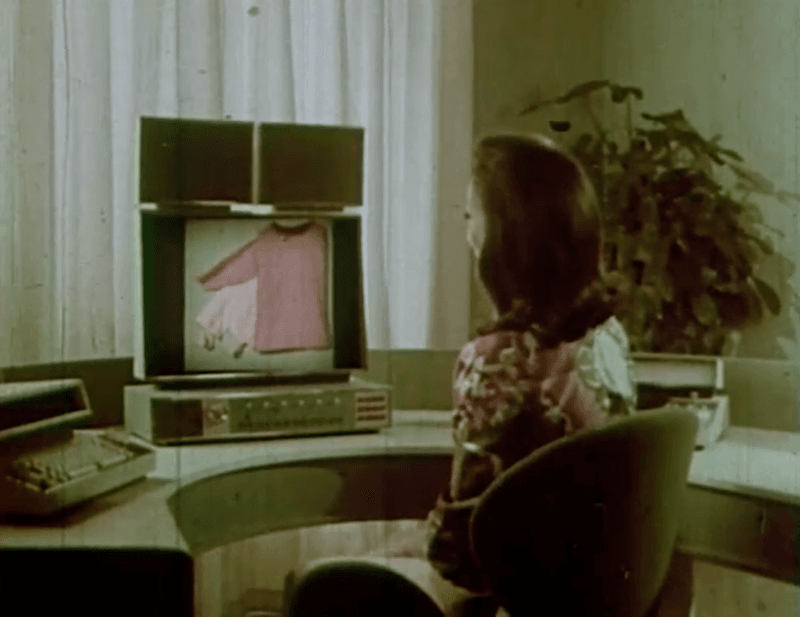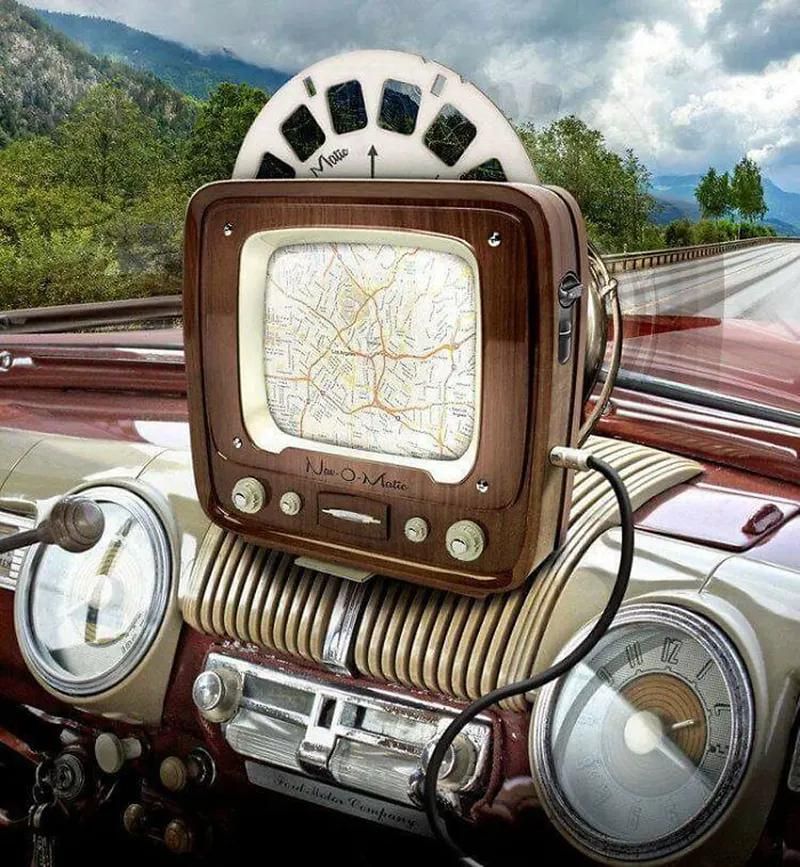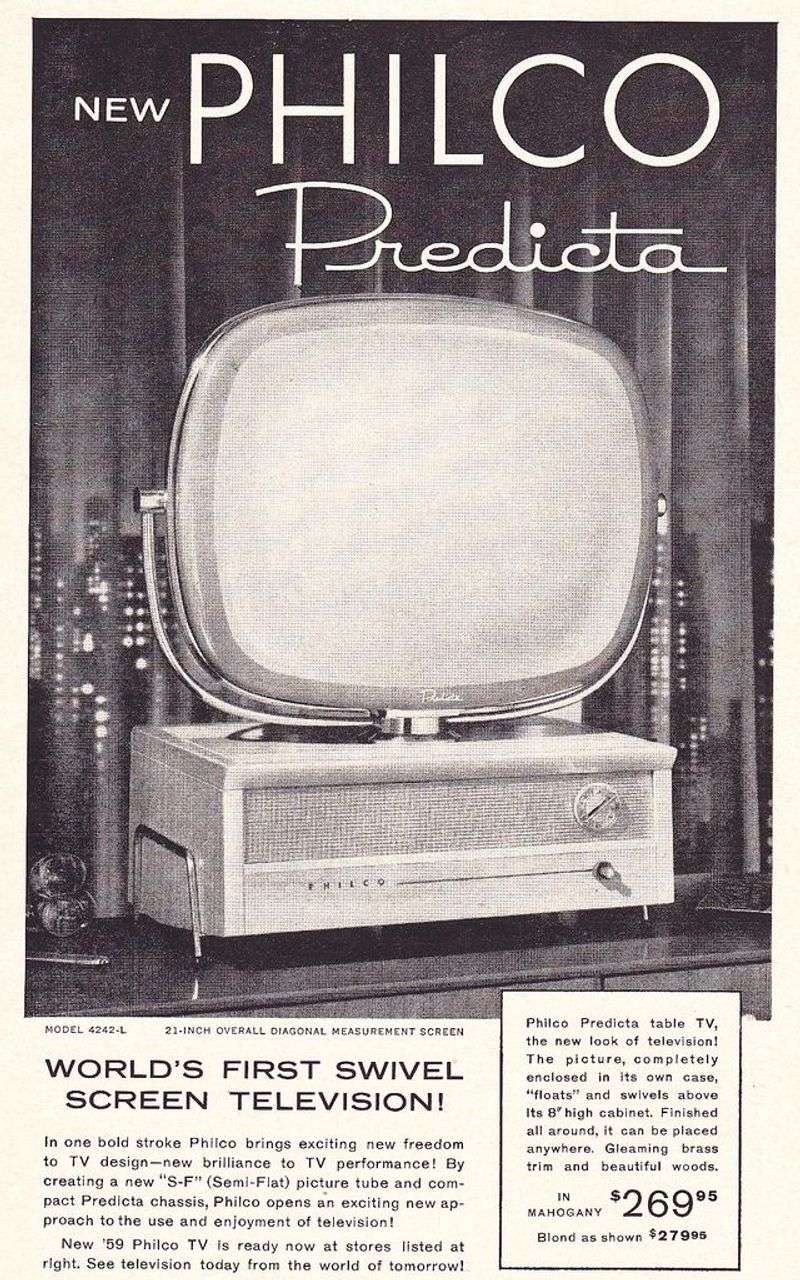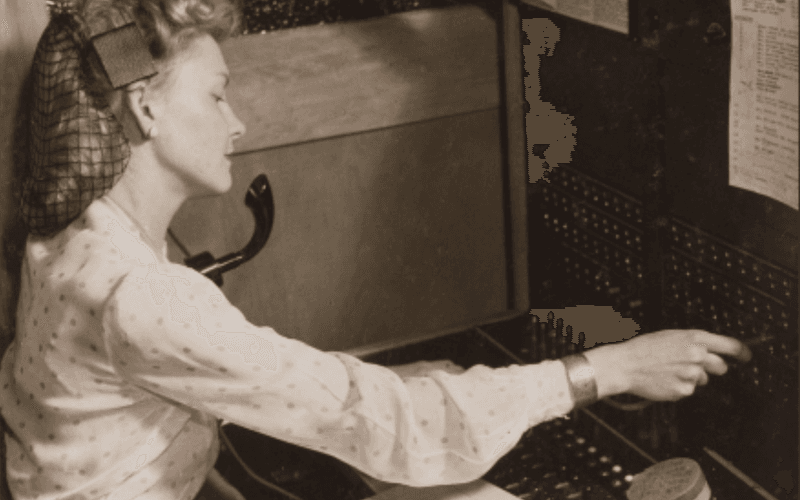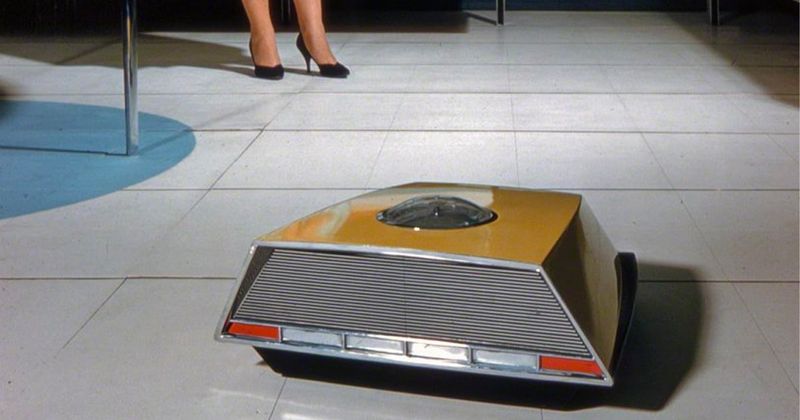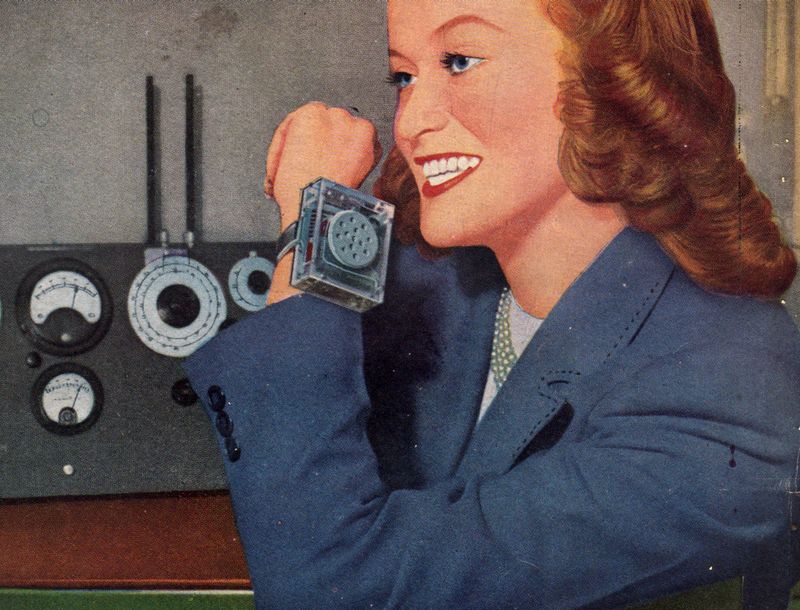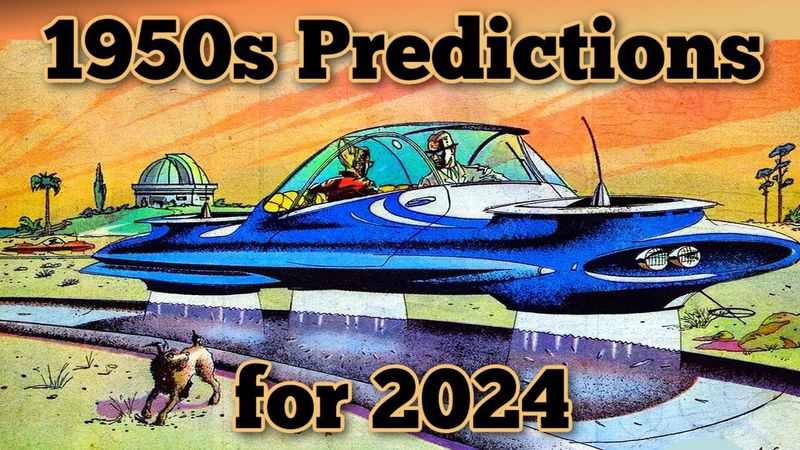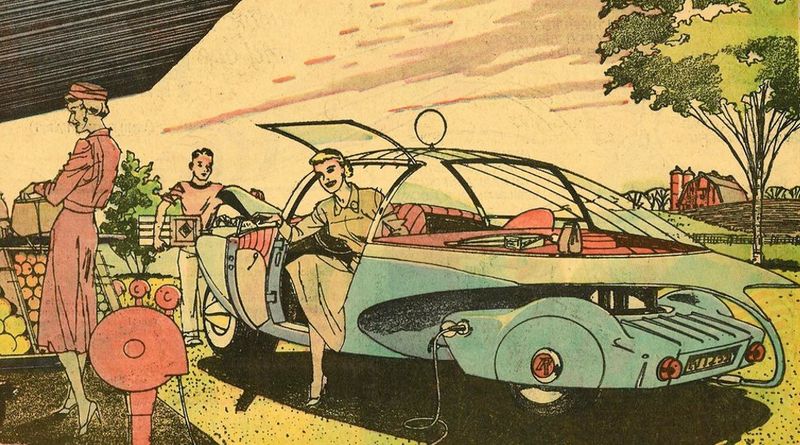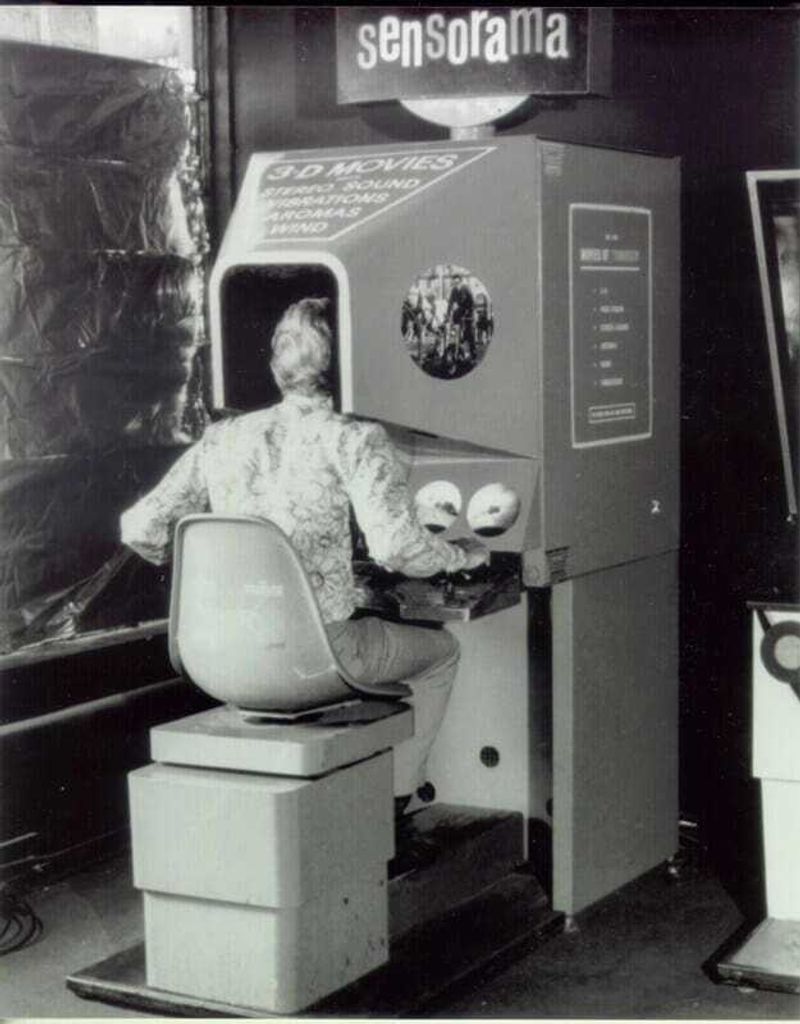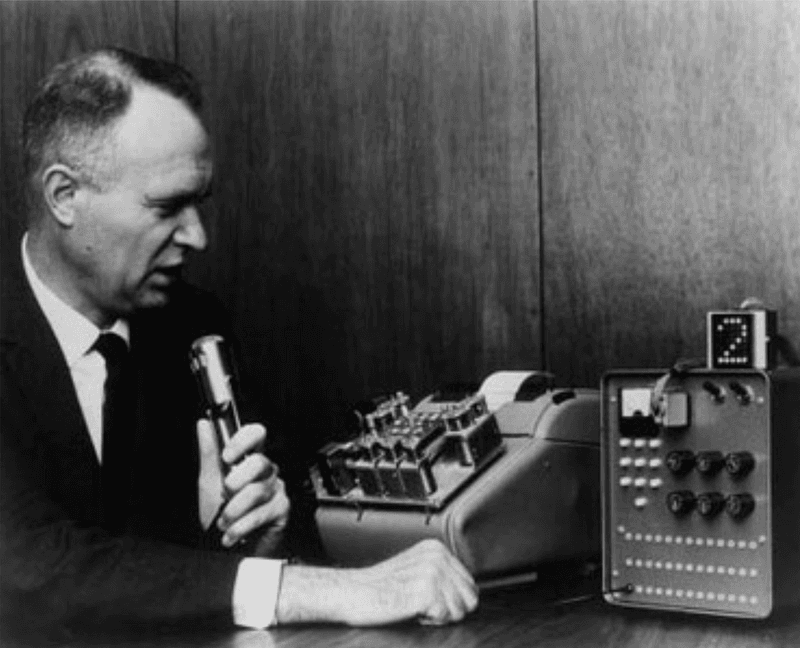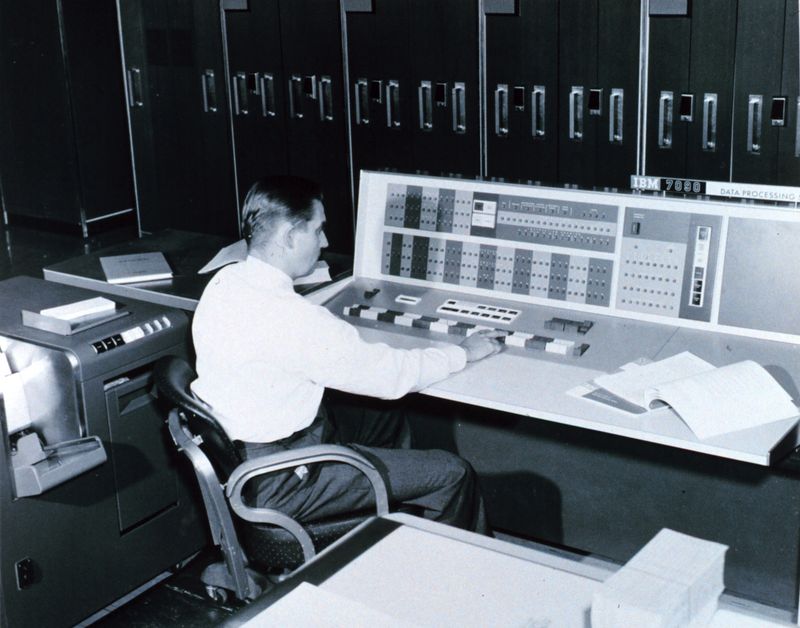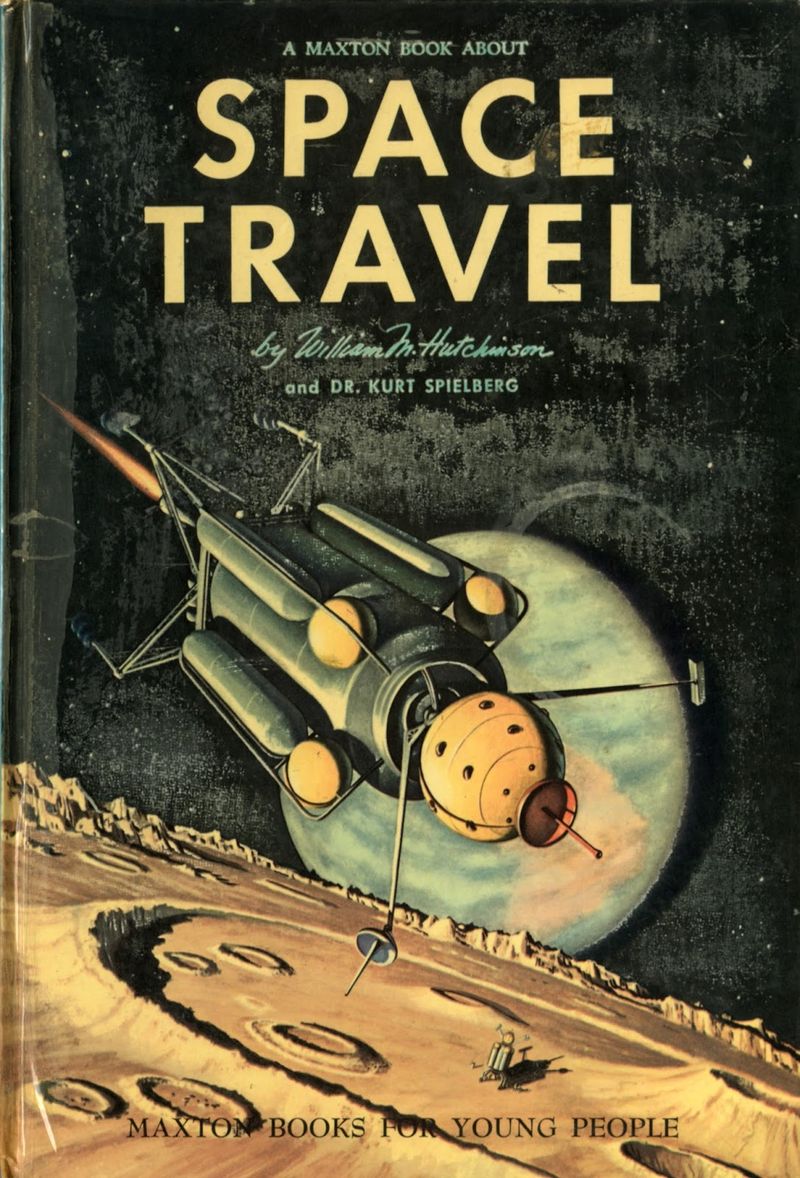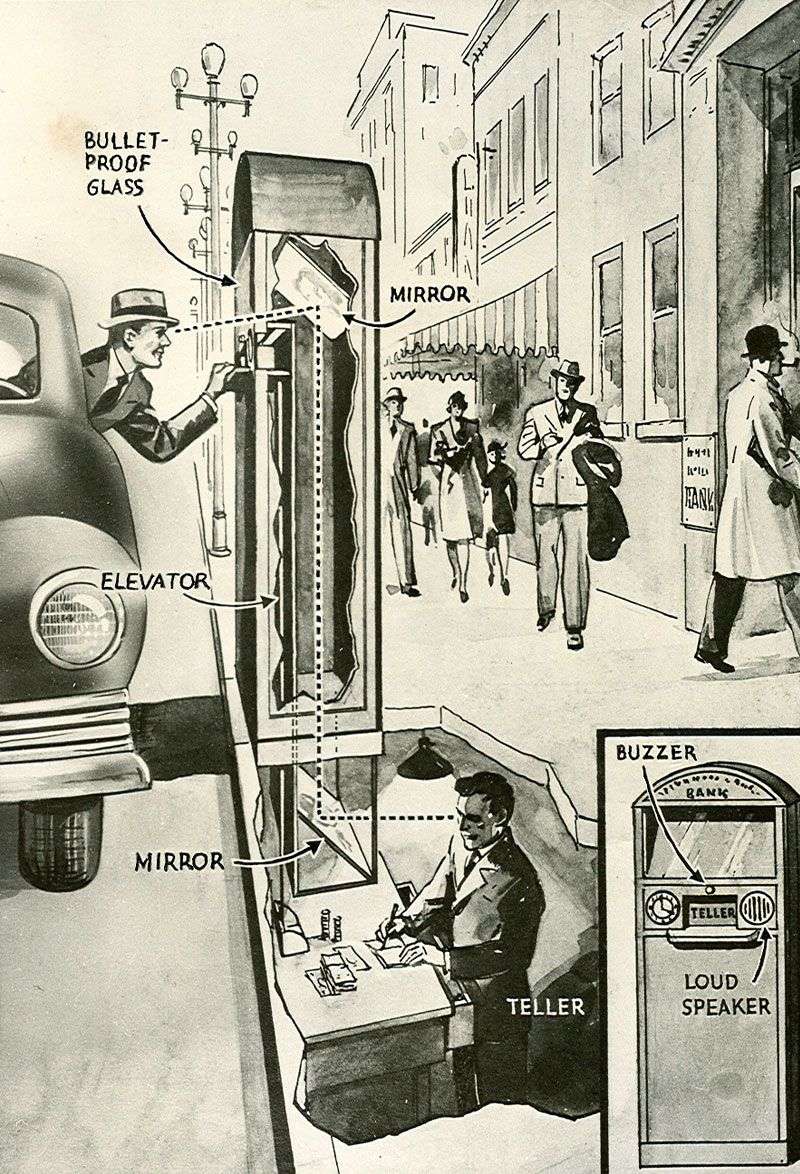The 1950s were a time of remarkable foresight and imagination. Many predictions from that era, once considered fanciful or unrealistic, have astonishingly come true. This article explores 23 predictions from the 1950s that have materialized in today’s world, demonstrating the incredible power of human innovation and vision.
1. Video Calling 💻📞
The dream of face-to-face conversations through screens captivated the 1950s imagination. Bell Labs and other visionaries were already working on this concept. Fast forward to today, and video calls are ingrained in our daily routines. Whether it’s connecting with loved ones or attending virtual meetings, platforms like Zoom and FaceTime make it possible. The transition from science fiction to reality underscores the relentless pursuit of innovation. How would 1950s dreamers react to the ease and ubiquity of modern video communication? It’s a testament to human ingenuity and progress.
2. Credit Cards 💳
In the 1950s, the idea of paying without cash seemed revolutionary. Futurists foresaw credit cards replacing physical money, and they were right. Today, digital payments and contactless technology are second nature, facilitating seamless transactions. From the first credit card issued to modern contactless payments, this financial innovation has transformed our economy. The transition from cash to digital has been swift, reshaping how we handle money. Imagine a 1950s diner where patrons marvel at the convenience of card payments. The prediction has become an everyday reality.
3. Microwave Ovens 🍲
The microwave oven was a novel concept in the 1950s, promising quick meal preparation. Visionaries foresaw its widespread adoption, and today it’s a kitchen staple. From reheating leftovers to cooking entire meals, microwaves have revolutionized home cooking. This appliance’s journey from futuristic idea to household necessity highlights the relentless march of technology. Picture a 1950s family amazed by the speed and convenience of modern microwaves. The foresight that predicted their ubiquity has indeed materialized in our fast-paced lives.
4. Home Computers 🖥️
In the 1950s, computers were massive machines filling entire rooms. The notion that ‘thinking machines’ would one day fit on desks seemed far-fetched. Yet, today’s computers are not only on desks but also in our pockets. This transition from colossal devices to personal computers and smartphones is a testament to technological progress. Imagine the surprise of a 1950s technician witnessing today’s computing power and accessibility. The prediction of home computers has not only come true but has exceeded expectations, reshaping our digital landscape.
5. Mobile Phones 📱
In the 1950s, the thought of carrying a phone in your pocket was fantastical. Sci-fi comics showcased tiny devices enabling communication across vast distances. Today, smartphones are our constant companions, doing much more than just making calls. They keep us connected, informed, and entertained. The evolution from bulky landlines to sleek mobile devices mirrors the incredible technological advancements of our time. Imagine the shock and awe of a 1950s individual witnessing today’s mobile world! From humble predictions to a global necessity, mobile phones have transformed our daily lives beyond imagination.
6. Self-Driving Cars 🚗🤖
The concept of self-driving cars was a bold prediction in the 1950s, capturing the imagination of many. Although we’re still perfecting the technology, companies like Tesla and Waymo have brought this vision to life. Today, autonomous vehicles navigate roads with increasing sophistication. This remarkable journey from science fiction to reality demonstrates the persistent drive towards innovation. Picture a 1950s family marveling at the sight of a car steering itself. The prediction of autonomous driving is unfolding on our roads, challenging our understanding of transportation.
7. Remote Work 🏠💼
In the 1950s, the idea of working from home was almost unheard of. Yet, some futurists envisioned a world where people could telecommute. Today, remote work is a global phenomenon, reshaping how we balance work and life. The shift from traditional offices to home workspaces is a testament to our adaptability and technological advancements. Envision a 1950s office worker experiencing the flexibility of today’s remote work culture. The foresight that predicted telecommuting has not only materialized but has become a defining feature of modern employment.
8. Online Shopping 🛒💻
In the 1950s, shopping from home seemed like a distant dream. Yet, the seeds were planted with catalog-based shopping, hinting at what e-commerce would become. Today, platforms like Amazon have made online shopping a staple of modern life. The transition from physical stores to digital marketplaces reflects the evolution of consumer behavior. Imagine a 1950s homemaker exploring today’s vast online retail world. The prediction of online shopping has not only been realized but has transformed how we purchase goods, emphasizing convenience and choice.
9. Satellite Navigation 📡🗺️
Before GPS, navigation relied on paper maps and intuition. However, some 1950s thinkers speculated that satellites could one day guide us. Today, satellite navigation is a routine part of driving, found in dashboards and smartphones. The transition from guesswork to precise guidance mirrors technological advancement. Visualize a 1950s traveler astonished by the accuracy and convenience of modern GPS systems. The prediction of satellite navigation has reshaped how we find our way, highlighting the power of space technology in everyday life.
10. Flat-Screen TVs 📺
The 1950s were dominated by bulky, black-and-white television sets. Visionaries imagined wall-mounted TVs with vibrant, colorful images. Today, flat-screen TVs are not only real but also come with advanced features like smart technology. The journey from cumbersome boxes to sleek displays exemplifies the remarkable strides in visual technology. Picture a 1950s family gathering around a modern flat-screen marveling at its clarity. The foresight that dreamed of flat-screen TVs has become an integral part of contemporary home entertainment.
11. Wireless Communication 📶
In the 1950s, radio experts were already dreaming of a wireless world. Fast forward to today, and we use Wi-Fi, Bluetooth, and 5G without a second thought. The transition from wired to wireless has transformed how we connect and communicate. Envision a 1950s engineer witnessing today’s seamless wireless connectivity. The prediction of a wireless future has not only come true but has become an essential aspect of modern technology, enabling a connected world. From homes to public spaces, wireless communication is a cornerstone of contemporary life.
12. Robot Assistants 🤖
The idea of robot assistants was a staple of 1950s science fiction. While we’re not quite at Rosie the Robot levels, devices like Roombas and Alexa have introduced automation into our lives. The transition from fantasy to reality underscores our technological progress. Picture a 1950s family observing a Roomba cleaning their living room with fascination. The prediction of robot assistants has come to fruition in subtle yet impactful ways, enhancing convenience and efficiency in our homes. Automation continues to evolve, hinting at even more futuristic possibilities.
13. Digital Watches ⌚
The concept of a watch that could do more than tell time intrigued 1950s futurists. Today, digital watches like the Apple Watch offer alarms, fitness tracking, and more. The evolution from simple timepieces to multifunctional gadgets highlights technological ingenuity. Imagine a 1950s individual marveling at the capabilities of a modern smartwatch. The prediction of digital watches has not only come true but has expanded to include health monitoring and connectivity. These wearable devices continue to innovate, reflecting the ongoing integration of technology into daily life.
14. Instant News & Information 🌍📰
In the 1950s, waiting for the morning paper was the norm for news. Visionaries imagined instant global information access, a reality today with push notifications. The transition from delayed to real-time news has reshaped media consumption. Picture a 1950s journalist overwhelmed by the speed and reach of modern news platforms. The foresight that predicted instant information has revolutionized how we stay informed, emphasizing immediacy and connectivity. From breaking news to live updates, today’s media landscape is a far cry from the past.
15. Electric Cars 🔌🚙
Electric cars were a niche concept in the 1950s, but visionaries foresaw their potential. Today, clean, battery-powered vehicles are gaining popularity, with brands like Tesla leading the charge. The shift from internal combustion engines to electric power highlights environmental awareness and innovation. Visualize a 1950s car enthusiast exploring a modern electric vehicle’s features. The prediction of electric cars has materialized, promising a sustainable future. As technology advances, electric vehicles are becoming more accessible and efficient, redefining transportation for a greener tomorrow.
16. Virtual Reality (VR) 🥽
Science fiction writers in the 1950s imagined entire worlds created by machines. Today, virtual reality lets us explore artificial environments, from gaming to training simulations. The transition from speculative fiction to practical application showcases the limitless potential of technology. Imagine a 1950s sci-fi enthusiast experiencing a modern VR headset’s immersive capabilities. The prediction of virtual reality has become a valuable tool for entertainment, education, and professional training, offering new perspectives and experiences in diverse fields.
17. Voice-Controlled Devices 🗣️🎛️
The notion that machines could respond to voice commands seemed unbelievable in the 1950s. Yet, today’s devices like Siri, Alexa, and Google Assistant do just that. The transition from disbelief to everyday convenience highlights technological progress. Picture a 1950s family interacting with a modern smart speaker, amazed by its responsiveness. The prediction of voice-controlled devices has materialized, offering hands-free interaction and accessibility. These systems continue to evolve, enhancing daily life with intuitive control and expanding capabilities.
18. Plastic Everything ♻️🧴
In the 1950s, plastic was hailed as a wonder material, predicted to dominate various industries. Today, plastic is ubiquitous, found in packaging, clothing, furniture, and more. The transition from novelty to necessity underscores its versatility and impact. Imagine a 1950s consumer witnessing today’s plastic-centric world. The prediction of plastic’s prevalence has come true, prompting discussions on sustainability and recycling. As we navigate its environmental implications, the journey of plastic remains a testament to human innovation and adaptability.
19. Weather Forecasting with Satellites 🌦️🛰️
In the 1950s, weather forecasts relied on observations and guesswork. Visionaries predicted the use of satellites to track weather patterns, a reality today with systems like GOES and NOAA. The transition from primitive methods to satellite-driven precision highlights technological advancement. Picture a 1950s meteorologist amazed by the accuracy and detail of modern weather forecasts. The prediction of satellite-based forecasting has transformed how we predict and respond to weather events, enhancing safety and preparedness worldwide.
20. Drones ✈️
Drones were once imagined as toys or military tools in the 1950s. Today, they’re widely used in photography, delivery, agriculture, and traffic management. The transition from speculative imagination to practical application showcases their versatility and impact. Envision a 1950s hobbyist piloting a modern drone, exploring its capabilities. The prediction of drones has come to fruition, expanding into diverse fields with innovative uses. As technology evolves, drones continue to push boundaries, offering new solutions and efficiencies across industries.
21. Space Travel 🌌🚀
The 1950s buzzed with dreams of reaching space, even before the Space Race kicked off. In 1969, we landed on the Moon, and today private companies are racing to Mars. The transition from ambition to achievement underscores humanity’s relentless pursuit of exploration. Imagine a 1950s dreamer witnessing a modern rocket launch or exploring Mars through virtual tours. The prediction of space travel has not only been realized but has ignited new aspirations for interplanetary exploration. As technology advances, the stars no longer seem out of reach.
22. Automated Banking (ATMs) 🏦
In the 1950s, the idea of automated banking was revolutionary. No more standing in long bank lines? That dream became reality with ATMs in the 1960s and beyond with mobile banking apps. The transition from manual transactions to automation demonstrates the evolution of financial services. Picture a 1950s banker amazed by the convenience and efficiency of modern banking technology. The prediction of automated banking has transformed how we manage our finances, offering accessibility and control at our fingertips.
23. Digital Education 📚💡
The idea that students could learn from screens at home was radical in the 1950s. Today’s online courses and e-learning platforms have made it a reality. The transition from conventional classrooms to digital education reflects the adaptability and innovation in teaching methods. Imagine a 1950s teacher exploring a modern e-learning platform, discovering its potential. The prediction of digital education has reshaped how knowledge is imparted, offering flexibility and access to diverse learning resources. As technology continues to evolve, education remains at the forefront of digital transformation.
